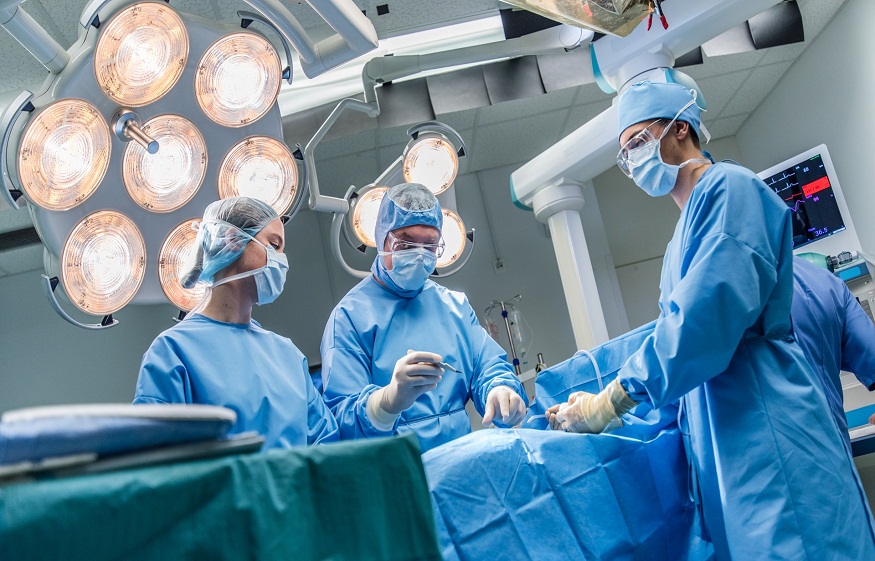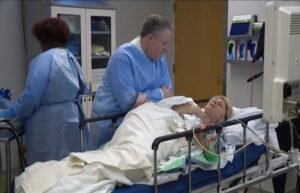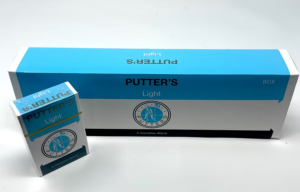Traditional and Synthetic Materials for Bone Grafts in Spinal Fusion
5 min read
Bone grafting is a critical component of spinal fusion surgery, serving to promote new bone growth and stabilize the spine. Traditionally, surgeons have relied on bone harvested from the patient (autografts) or from a donor (allografts) to facilitate spinal fusion. However, advancements in medical technology have introduced synthetic bone graft materials, providing surgeons and patients with more options for achieving successful fusion. Dr. Larry Davidson, an expert in spinal surgery, recognizes that while both traditional and synthetic grafts are important, each comes with distinct benefits and challenges that must be carefully weighed.
Traditional Bone Grafts: Autografts and Allografts
In the realm of traditional bone grafting, autografts—bone taken from the patient’s own body—are often regarded as the gold standard for spinal fusion. The bone is typically harvested from the iliac crest of the pelvis and used to fill the space between vertebrae, fostering new bone growth and facilitating fusion. Autografts offer the unique advantage of being highly biocompatible, as they come from the patient’s own body, thus eliminating the risk of immune rejection. Additionally, they contain live bone cells and natural growth factors that promote rapid, reliable healing and structural integration.
However, the use of autografts is not without its drawbacks. Harvesting bone from the iliac crest involves creating a second surgical site, which can lead to additional pain, risk of infection and potential complications. Despite these risks, autografts remain highly valued for their efficacy in achieving successful fusions, particularly in patients who require robust, long-lasting support.
Allografts, by contrast, involve the use of bone tissue from a donor. This approach eliminates the need for a second surgical site, sparing the patient from the pain and risks associated with autograft harvesting. While allografts are effective in many spinal fusion cases, they lack the live cells and growth factors found in autografts, which can slow down the fusion process. There is also a small risk of immune reaction or disease transmission with allografts, although advancements in sterilization and donor screening have greatly minimized this concern. While allografts may not always match the efficacy of autografts, they provide a valuable alternative for patients who are not ideal candidates for self-donated bone tissue.
Synthetic Bone Grafts: A Modern Alternative
In recent years, synthetic bone graft materials, which include ceramics, polymers and bioactive compounds, have emerged as a promising alternative to traditional grafts. These materials are engineered to mimic the properties of natural bone and support the fusion process. One of the primary benefits of synthetic grafts is that they do not require harvesting bone from the patient, eliminating the pain and potential complications associated with autografts.
Synthetic grafts also offer considerable flexibility in design, allowing for greater customization to meet the specific needs of each patient’s spinal condition. For example, certain synthetic grafts are enhanced with bioactive substances that stimulate bone growth, while others serve as a scaffold that encourages natural bone to grow over time. Some synthetic materials are biodegradable, allowing them to be gradually absorbed by the body as natural bone takes its place, reducing the risk of long-term complications.
This customization makes synthetic grafts an appealing option, particularly for patients who are not suitable candidates for traditional grafting methods due to health considerations or prior surgeries. Additionally, synthetic grafts are available in various forms, such as blocks, granules and injectable pastes, providing versatility in surgical applications and enabling surgeons to tailor the graft precisely to the fusion site’s dimensions.
Comparing Efficacy and Safety
When evaluating traditional bone grafts and synthetic alternatives, the rate of successful fusion remains a primary consideration. Autografts are widely recognized as the most effective option due to their inherent biocompatibility, live cells and natural growth factors that promote faster and more reliable bone healing and integration. Studies have shown that autografts yield high fusion rates, making them a preferred choice in many complex spinal surgeries.
However, synthetic grafts have shown increasingly favorable success rates, particularly when used in combination with growth factors or as part of a hybrid approach that includes both synthetic and natural materials. By integrating synthetic materials with autografts, surgeons can potentially create an environment that maximizes bone growth while minimizing the need for extensive autograft harvesting, striking a balance between efficacy and patient comfort.
Safety is another critical factor. Autografts carry the risks associated with a second surgical site, including donor site pain, infection and blood loss, which can affect recovery. Allografts reduce these risks but carry a minimal chance of immune response or disease transmission despite rigorous sterilization procedures. Synthetic grafts, on the other hand, eliminate the risks of donor site complications and immune reactions. However, depending on the material, they may not integrate with the body as quickly or robustly as autografts, which can be a consideration in cases requiring rapid healing.
The Future of Bone Grafting in Spinal Fusion
As technology continues to advance, the field of bone grafting in spinal fusion is likely to evolve significantly. New synthetic materials are under development, aiming to enhance the rate of fusion while minimizing the risks associated with traditional grafts. For instance, certain bioengineered grafts incorporate nanotechnology to enhance cellular interaction and accelerate bone growth, offering the potential for faster fusion and reduced recovery times.
Moreover, researchers are exploring the use of stem cells and biologics to augment bone regeneration, which could expand the options available for patients undergoing spinal fusion. Stem cell-based grafts may provide a more natural and effective way to stimulate bone growth by delivering potent regenerative cells directly to the fusion site. Additionally, gene therapy is being investigated to boost bone formation by introducing genetic material that promotes growth factors essential for bone fusion.
Balancing Traditional and Synthetic Grafting Methods
Bone grafting remains an essential element of spinal fusion surgery, with both traditional and synthetic materials offering distinct advantages. Autografts and allografts provide reliable, biologically compatible options for promoting bone growth, particularly in patients requiring strong, enduring support for spinal stability. Synthetic alternatives, however, offer flexibility, reduced complications and the potential for customization, making them increasingly popular in a wide range of spinal fusion cases.
Dr. Larry Davidson observes that the choice between traditional and synthetic graft materials must be carefully tailored to the patient’s unique needs and the specific goals of the surgery. As advancements in material science and regenerative medicine continue, both traditional and synthetic grafts are likely to play vital roles in spinal fusion procedures, ultimately offering patients more personalized, effective and safe solutions for achieving spinal stability and long-term health.





